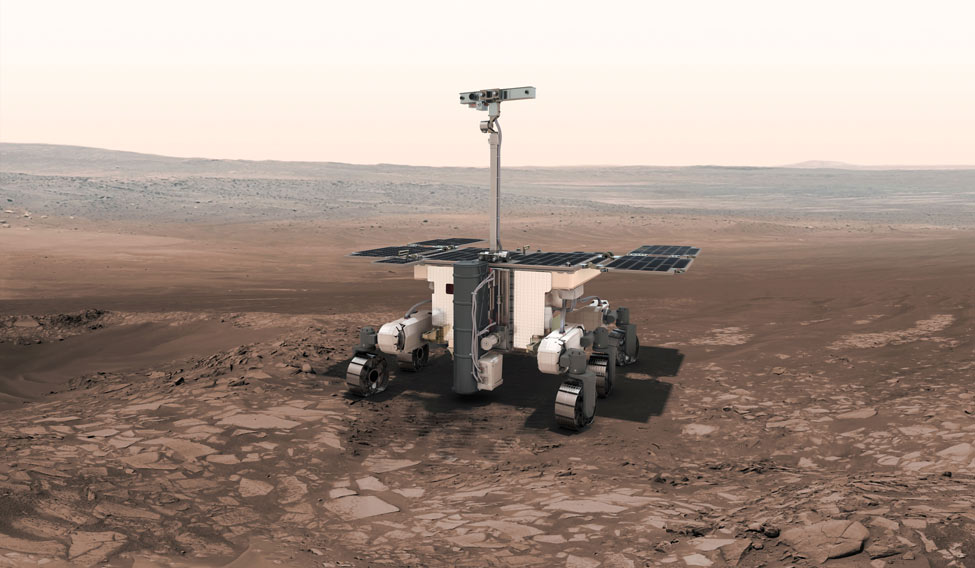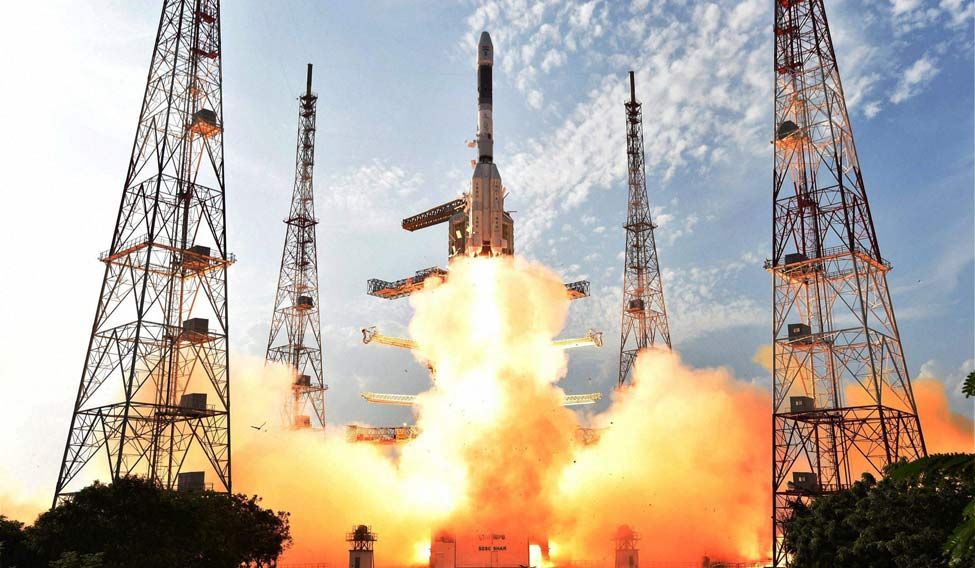With new discoveries, outer space missions, and the launch of the biggest-ever search for extra-terrestrial life, space exploration has never looked more exciting.
Finding Planet Nine
In 2006, in a move that forced science textbooks to be rewritten, Pluto was officially removed as the ninth planet. “Whoa! Pluto's dead,” said astronomer Mike Brown of the California Institute of Technology who had led the charge to demote Pluto to a dwarf planet status. Since then, astronomers have been on the lookout for a hypothetical Planet X, which many termed Planet Nine. Much to their excitement, in January this year, a team led by Brown (again) claimed to have found evidence of a 'real ninth planet'—a planet 10 times bigger than earth in the far outer solar system, orbiting about 20 times farther from the sun than Neptune. Though the planet's orbit has been mapped, its exact location is not yet known. Brown hopes this new bit of information would inspire others, too, to start searching for the planet. “...find this planet and make the solar system have nine planets once again,” he said.
 Model of the Juno spacecraft | AFP
Model of the Juno spacecraft | AFP
Welcome to Jupiter
It was a do-or-die mission for Juno, Nasa's spacecraft, which reached Jupiter on July 4 after a five-year journey. Named after the Greek god Jupiter's wife, the solar-powered spacecraft will study the structure, composition, and gravitational and magnetic fields of the solar system's largest planet. Juno gathers the maximum amount of data during its close flybys. In October, however, in its second-ever close flyby, the spacecraft suffered a technical glitch and went into a protective safe mode. Juno has exited the mode and all's well now, claims Nasa. At the end of its mission, most likely in February 2018, according to Nasa, Juno will deliberately dive into Jupiter's atmosphere and disintegrate into a ball of flame. This purposeful death is planned to prevent any chance of it accidentally crashing into the planet's potentially habitable moons, particularly Europa, which, scientists believe, is one of our best bets for finding alien life.
 The ExoMars rover | ESA
The ExoMars rover | ESA
ExoMars landing
The ExoMars mission—a collaboration of the European and Russian space agencies—reached Mars on October 19 but the Mars lander Schiaparelli crash-landed on to the martian surface, rendering it dysfunctional. Despite the crash, ExoMars is considered mostly successful because its second part, the Trace Gas Orbiter, has successfully entered the martian orbit and has already sent in amazing high-resolution images of the Red Planet. The aim is to study the martian environmental conditions and also explore possibilities on life on the planet. The European Space Agency (ESA) is confident of picking up lessons from the botched landing, to prepare for the ambitious second phase of ExoMars in 2020. Had the landing been successful, ESA would have become the second space agency to land on the surface of Mars, after Nasa.
Farewell Rosetta
For space enthusiasts, Rosetta is a household name. And that is probably why the space probe got a teary-eyed farewell. After a 12-year deep space odyssey, the historic Rosetta probe executed a slow-motion crash on to the surface of comet 67P/Churyumov–Gerasimenko, which it had spent studying for years. The spacecraft launched by the ESA ended its mission on September 30 by streaming live its free fall towards the comet. During its final descent, the Twitter account for Rosetta tweeted a final farewell message and cartoons reminiscing its good times. With the soft landing, Rosetta did not suffer much damage, but its antenna will not be able to point at earth, hence ending the mission.
Launched in 2004, Rosetta took 10 years to reach the comet. Orbiting a comet was a landmark first for science and the time Rosetta spent orbiting 67P gave scientists the opportunity to study comets closely. While scientists will continue to study data sent by Rosetta for years, the spacecraft will continue its journey, riding indefinitely on the comet's surface.
Search for ET
Scientists got an adrenaline rush in August when reports surfaced of a mysterious radio signal detected by a Russian telescope that scans outer space for signs of extraterrestrial life. All hopes, however, were dashed a week later with reports suggesting the signal had more of a terrestrial cause. ET fans, do not lose heart yet. The world's biggest-ever search for ET—The Breakthrough Listen—kicked off this year. The project, which uses two of the world's most powerful telescopes—the Green Bank radio telescope in West Virginia and the Parkes telescope in Australia—will scan the skies for alien life like never before. The project is backed by astrophysicist Stephen Hawking and Russian tycoon Yuri Milner, but Hawking has a word of caution. Humanity should be wary of seeking contact with alien civilisations, Hawking said in a documentary this year. The slew of potentially habitable planets revealed by Nasa's Kepler space telescope also broadens the scope of search for highly evolved alien life. This year, Nasa revealed the largest haul of alien planets ever unveiled at a time—1,248 new exoplanets, of which nine might be capable of supporting life. To add to the frenzy, astronomers announced the discovery of a potentially earth-like planet, Proxima b, orbiting Proxima Centauri, the closest star to the sun. The planet appears to be rocky, and warm enough to have liquid water, and hence, support life.
 (FILE) NASA astronaut Scott Kelly watches fresh carrots float in front of him on the International Space Station | NASA
(FILE) NASA astronaut Scott Kelly watches fresh carrots float in front of him on the International Space Station | NASA
Homecoming
US astronaut Scott Kelly and his Russian counterpart Mikhail Kornienko touched down on earth in March, after almost an year in space onboard the International Space Station. After the historic 340-day mission, the crew landed in Kazakhstan on a Soyuz space capsule. The mission was an experiment to study the long-term effects of microgravity, isolation and space radiation on the human body and mind. Kelly’s identical twin brother, former Nasa astronaut Mark Kelly, participated in parallel twin studies on earth to help scientists compare the effects of space. Through lessons learnt in this experiment, Nasa hopes to prepare humans for longer missions to Mars and beyond. In October, three other astronauts landed on earth after 115-day stay on the ISS. The team included US astronaut Kate Rubins, the first person to sequence DNA in space.

Great year for ISRO
Forget space achievements abroad. 2016 has been a spectacular year for the Indian Space Research Organisation, too, which basked in the limelight of a handful of successful launches. Though most of the satellites launched by the agency this year were foreign, 10 were Indian—the highest ever by ISRO. A significant milestone for the space agency was the launch of PSLV-C35 on September 26, which set two records: spanning over two hours, this was IRSO's longest launch; the rocket launched eight satellites in two different orbits—another first for ISRO. In a significant move that is expected to bring down the dependence on the US GPS, ISRO, in April, successfully launched the seventh and final satellite of India's own navigation satellite system NavIC. In yet another proud moment for ISRO, Cartosat-2C, Earth observation satellite launched this year, was said to have helped the Indian Army with relevant images to carry out surgical strikes.
The year also saw ISRO successfully testing a scramjet, an air-breathing propulsion system. A scramjet engine sucks in atmospheric oxygen to burn fuel, thus reducing the amount of oxidiser that needs to be carried to burn the fuel. This, in turn, brings down the weight of the rocket, reducing launch costs. The space agency wrapped up its satellite launches in 2016 by putting into orbit remote sensing satellite Resourcesat-2A on December 7.
Meanwhile, the space agency also signed a contract with Bengaluru-based TeamIndus to land a spacecraft on the moon. The year ahead will see ISRO aiming for a world record of launching 83 satellites on a single rocket.





